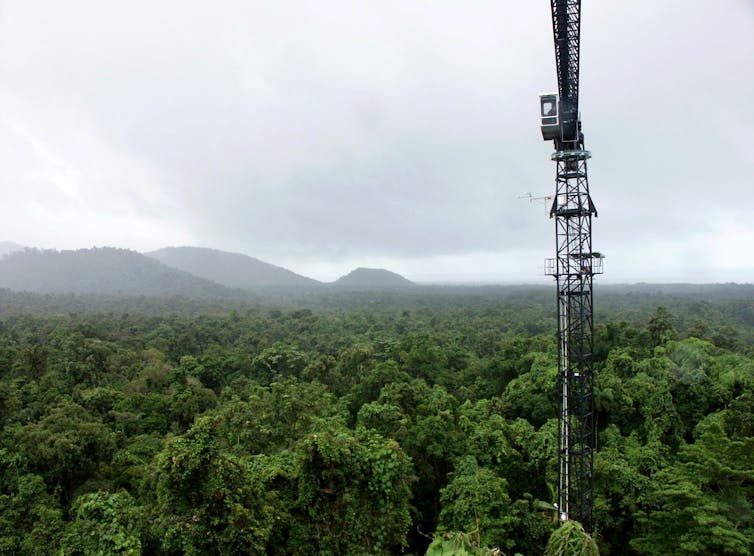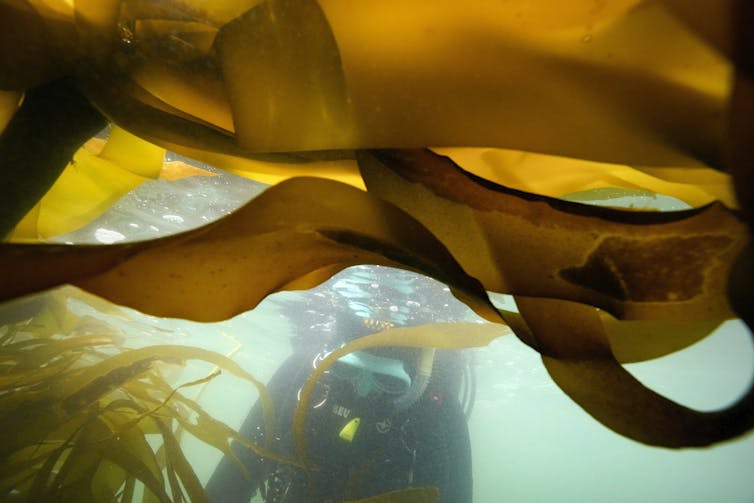The global effort to keep climate change to safe levels – ideally within 1.5°C above pre-industrial temperatures – is moving far too slowly. And even if we stopped emitting CO² today, the long-term impacts of the gas already in the air would continue for decades. For these reasons, we will soon have to focus not only on halting but on reversing global warming.
We can do that in two ways. The first is by “drawdown” – strengthening natural processes on Earth that withdraw CO² from the atmosphere. The second is through vast experiments with the climate known as geo-engineering, some of which sound like science fiction, and could be extremely dangerous if ever tried.
The dangers of some forms of geo-engineering
Geo-engineering proposals to arrest climate change range from the seemingly sensible – painting our roofs and roads white – to the highly speculative: solar radiation modification, or putting mirrors in space to reflect some of the Sun’s heat away from Earth. Probably the most commonly proposed form of geo-engineering involves putting sulfur into the stratosphere to dim the power of the sun.
The natural 1991 eruption of the Pinatubo volcano in the Philippines showed the effects of sulfur in action. The eruption measurably cooled the Earth’s surface for almost two years.
But we don’t have to wait for an erupting volcano: all we need do is add some sulphur to the emissions of the world’s airline fleet, and release it once planes are in the stratosphere. The sulphur layer, which would also reflect some of the Sun’s heat back to space, would be a relatively inexpensive global cooling mechanism, instantaneous in its effect and implementable right now.
Yet this approach does nothing to remove CO² from the atmosphere, or to reduce the rising acidity of the oceans. It’s like a Band-Aid over a festering sore. And, beyond its cooling effect, its impact on the climate system as a whole is unknown: no one to my knowledge has modelled the effects of using the jet fleet in this way.
No international treaty exists to regulate such experiments. In April 2022, the US start-up company, Make Sunsets, released weather balloons designed to reach the stratosphere, carrying a few grams of sulphur particles. There was no public scrutiny or scientific monitoring of the work. The company is already trying to sell “cooling credits” for future flights that could carry larger volumes of sulphur.
And what if climate change brings mass famine and civil disobedience to China? It is already seeding clouds to make rain on a massive scale. China might think it is doing the right thing by putting sulfur into the stratosphere. But that decision might lead to war with other countries. What if this form of geoengineering affected the monsoon in India and caused famine? We just don’t know what the climatic and political impacts would be.
Read more: From laggard to leader? Why Australia must phase out fossil fuel exports, starting now

Drawdown’s potential to store carbon
Drawdown, by contrast, involves withdrawing CO² from the atmosphere and storing it in other planetary organs, such as rocks, oceans or plants. Drawdown is much longer term than geoengineering, and most initiatives are only in the research and development stage. The most advanced and practical, by far, is forest protection and reafforestation.
Today humans emit about 51 billion tonnes of CO² a year. Protecting and regenerating forests draws down 2 billion tonnes a year. Other approaches, such as direct air capture of CO², draw down much smaller volumes.
So forest protection and reafforestation is our best bet for getting us closer to limiting warming to 1.5°C. A recent paper in the Nature journal argues we could draw down as much as 226 gigatonnes by allowing existing forests in areas where few humans live to recover to maturity, and by regrowing forests in areas where they have been removed or fragmented.
Read more: Australian homes can be made climate-ready, reducing bills and emissions – a new report shows how

We should not ignore other drawdown pathways, however. Seaweed is a promising option for drawing down a billion tonnes or so of CO² by 2050. But we need a lot more scientific research to understand how to do that, and what its wider impacts might be. Today only one commercial kelp farm exists – Kelp Blue, off the coast of Namibia, where four hectares of kelp are not only storing carbon but are used to make biodegradable food packaging and crop stimulants.
Silicate rocks, which are common in many places, including Victoria’s Western District, also offer great hope. Once the rocks are crushed, a kilogram of a mineral they contain, olivine, will sequester 1.5 kilograms of CO² from the atmosphere within a few weeks of being spread on a farm field or put onto a beach.
The crushing speeds up a natural sequestering process of thousands of years. Field trials conducted in Brazil and other countries show using crushed rocks on crops can bring another benefit – significant increases in the yields of corn, cocoa and many other crops.
The problem is that the way we quarry and transport rocks today creates a lot of fossil fuel emissions. Once a farm is more than a few hundred kilometres from the quarry most of the benefit is gone. So until we can decarbonise transport and industrial energy, the benefit of silicate rocks will be minimal.
A process known as “direct air capture” sucks CO² out of the air and either puts it deep into rock strata or uses it for greenhouses or as the basis of concrete, plastic and other products that can sequester carbon long term. Nineteen plants using this technology are already operating around the world, including in Switzerland, the US and Iceland. But again, a lot of industrial capacity and a clean energy to run the plants are needed to get the value.
Read more: Green growth or degrowth: what is the right way to tackle climate change?

What the Albanese government should do
For these reasons, the Albanese government should focus its drawdown efforts on forest protection and regrowth. This could be a theme of the UN climate conference Australia is bidding to co-host with Pacific nations in 2026. Our temperate forests contain more carbon per hectare than almost anywhere on Earth. Stopping old-growth logging would be a magnificent contribution to arresting climate change.
The government should also back research and development on seaweed and silicate rocks so that the country’s huge resources can be responsibly deployed in future. Finally, Australia must push urgently for a global treaty to restrain sulphur geoengineering.
Today governments are busy just trying to reduce emissions and haven’t looked closely at drawdown and geoengineering. But things are moving fast, and it’s time to start.
Read more: Australia's new dawn: becoming a green superpower with a big role in cutting global emissions

